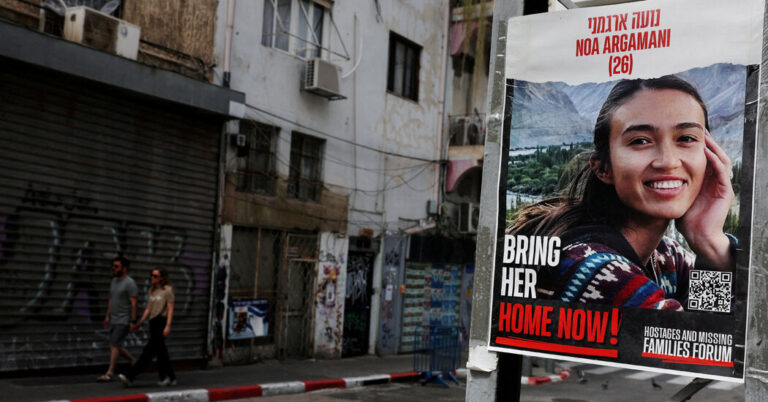One day after Israeli forces bombed a UN school complex In central Gaza, which has become a refuge for displaced Palestinians, certain facts remain unclear or controversial.
Israel said it struck three classrooms used by 20 to 30 Palestinian militants, including some who took part in the Hamas-led attack on Israel on October 7, and was unaware of civilian casualties. Gaza health authorities said many of the dozens of people killed were children and women. Here’s what we know and what we don’t know.
What was bombed?
The multi-story building was one of several buildings that made up the UNRWA Nuseirat Boys’ Preparatory School. It was one of several schools in Gaza run by the main United Nations agency for Palestinian refugees and their descendants.
Like everything local schools, it ceased operating as a school in October, after Hamas carried out an attack on Israel, and Israel began its retaliatory bombing campaign. And like many of them, it filled with people who, displaced by the war from other parts of Gaza, sought refuge in schools, hospitals and other institutions they hoped would be less likely to be bombed.
Philippe Lazzarini, director of the United Nations aid agency for Palestinian refugees, said 6,000 people lived in the school. About three-quarters of Gaza’s 2.2 million residents have fled their homes, many repeatedly.
The Israeli military has labeled the Nuseirat school a militant base, saying Hamas and Palestinian Islamic Jihad fighters used three of its classrooms to plan and carry out operations against Israel.
How many people were killed in Nuseirat, and who were they?
The Israeli military on Friday released the names of eight Hamas and Palestinian Islamic Jihad fighters it said were killed in the attack, adding to a list released on Thursday and bringing the total number to 17.
A military spokesman, Lt. Col. Peter Lerner, said Thursday he was “not aware of any civilian casualties” following the strike. The military did not respond Friday when asked if that was still the case.
But witnesses, medical staff and Gaza officials said dozens of civilians were killed – and many were children or women.
A Gaza Health Ministry official said Thursday that at least 41 people had been killed, and another said 46. Yasser Khattab, an official overseeing the morgue at the nearby Al Aqsa Martyrs Hospital of Deir al Balah – where many bodies were taken – said There were 46 deaths, including 18 children and nine women. But his statements could not be independently confirmed.
Mr Khattab said the hospital had a well-established system for documenting and identifying bodies and body parts. “We are looking for any marker that could help us identify the person,” he said.
A New York Times reporter who visited the hospital after the bombing saw the hospital filled with bodies of the dead, the living and their loved ones, as well as doctors trying to make their way out through the mass of people. Witnesses described removing the remains of children from the rubble of the school.
Karin Huster, medical coordinator for the humanitarian group Doctors Without Borders who works at the hospital, said most of the patients she has seen in recent days have been women and children.
How prudent was Israel’s action?
The bombing of Nuseirat illustrates the horrible calculation of this war which has lasted for eight months. Operating in densely populated neighborhoods, Hamas is accused of cynically using Palestinians and civilian infrastructure as shields. By targeting Hamas, Israel regularly kills civilians and is accused – even by its allies – of using excessive and indiscriminate force.
The Israeli military says the airstrike was planned and carried out with care and precision, targeting only the three rooms at the school used by the militants. There and at a camp in Rafah – where Israeli bombardment and shooting followed killed 45 people at the end of MayAccording to Gaza officials, Israel used American-made GBU-39 bombs containing about 37 pounds of explosive, which the military says are the smallest its warplanes carry.
The army said 20 to 30 militants used the school as a base, some of whom took part in the October 7 assault. He said he kept them under surveillance for three days before striking when there would be the fewest civilian casualties.
International laws of war prohibit the use of sites like hospitals, schools and places of worship for military purposes. These laws also prohibit military forces from attacking such sites, with a limited exception if the enemy uses them.
Israel says it operates within this exception because Hamas regularly operates inside these buildings and in the tunnels beneath them, making civilian casualties inevitable.
“We see that Hamas still exists and still has capabilities above and below ground,” Col. Lerner said Thursday.
In recent months, Israeli forces have repeatedly returned to places like Nuseirat, which they had previously taken control of, and then left, as Hamas fighters reappear there. Israeli officials said this demonstrated the need for strikes like Thursday’s.
According to legal experts, the extent to which an attacking force can go with such operations differs from case to case depending on how it attempts to protect civilians and distinguish them from combatants, and proportionality. of the attack in relation to the military advantage obtained. In other words, it can be very murky in specific cases.
Richard Pérez-Peña And Ephrat Livni reports contributed.


